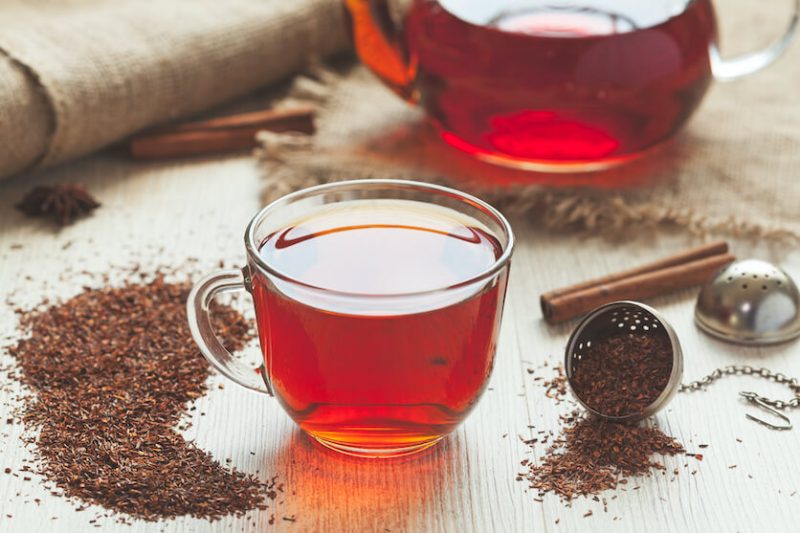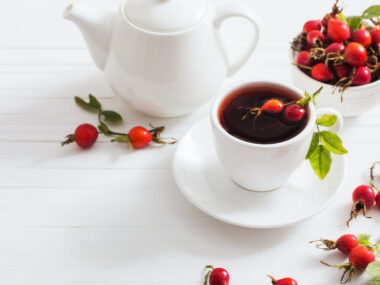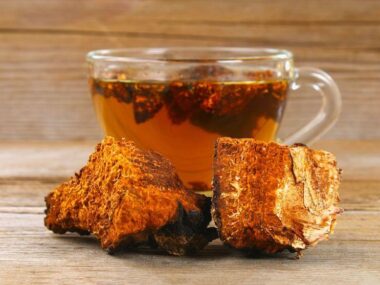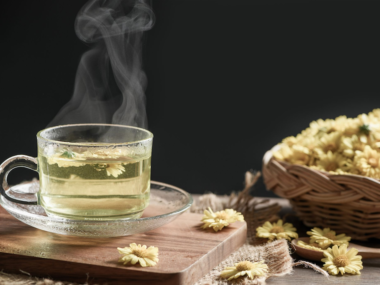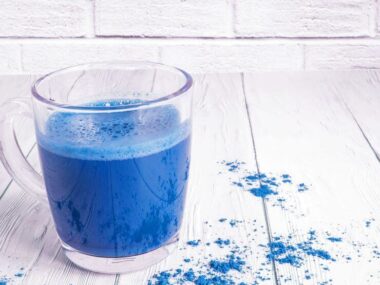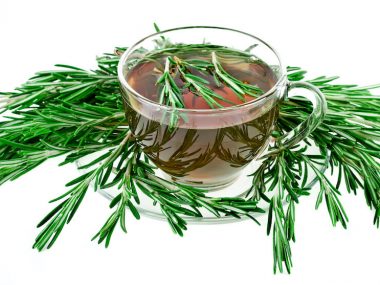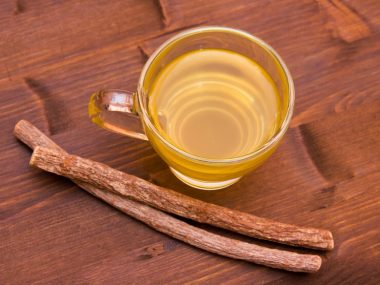How does such a great-tasting tea come from scrappy tumbleweed-looking bushes? The loose-leaf form looks similar to mulch, but the taste, once it hits the teacup, is the bomb! Meet the flavorful rooibos tea.
Table of Contents
What Is Rooibos Tea?
Rooibos tea is tisane (herbal tea) made by brewing the leaves from an herbaceous plant known as Rooibos. This tea comes in two forms that include unfermented and fermented. The unfermented Rooibos is called “green Rooibos” and the fermented Rooibos is known as “red Rooibos” — one of the popular red tea types.
What Is Rooibos?
Rooibos (Aspalathus linearis) is an herbaceous shrub plant that grows in only one region of the world which is the Cederberg Mountains of South Africa. At first glance, the Rooibos plant looks like a scrappy desert bush somewhat close to a tumbleweed. The stems jaunt upwards from a clump and are covered in needle-like leaves.
Cultivators growing Rooibos have crops dotting the sandy soils of the valleys that hug the Olifants, Breede, and Hex rivers.
The History Behind Rooibos
Carl Thunberg (botanist) officially recorded Rooibos as a plant species back in 1772. Indigenous tribes were said to have used Rooibos to not only make tea but use medicinally to treat various ailments. It wasn’t until around 1900 that the value of this plant was recognized, and cultivation began.
World War II greatly influenced the tea industry leading to a major global tea shortage. The majority of the tea exports came from China and Japan, which were cut off from the war leading to tea traders seeking other alternatives to compensate for the serious deficit in available tea.
Rooibos was found to be a well-accepted alternative tea traders were looking for. Before long, tea drinkers accepted Rooibos as a main-stream tea thanks to Benjamin Ginsberg (a shop owner in Clanwilliam, South Africa.) He began to market Rooibos in 1904 that was cultivated and processed by Rooibos growers who were handed down the craft of Rooibos growing by their indigenous ancestors belonging to Khoikhoi tribes (the first population of people in South Africa.)
The local physician (Dr. P. Le Fras Nortier) in Clanwilliam is the one responsible for bringing attention to the medicinal benefits of Rooibos through a cooperative effort with local Rooibos growers. Dr. Nortier conducted various experiments and research to better understand how people benefit from consuming this tea.
Today, you can step into the local tea shop in Clanwilliam and enjoy one of a hundred variations of Rooibos tea. Among those varieties are herb/spice/fruit-infused Rooibos teas, green Rooibos, and fermented Rooibos. The world’s first tea espresso was invented in this area, with tea shops serving up espresso made from Rooibos. The fermented counterpart is what makes Rooibos the vibrant red color it’s known for.
The exportation of Rooibos grows as more and more tea drinkers around the world want more of this tea. The South African Journal of Botany reports Germany as having the largest demand for Rooibos, with Netherlands, United Kingdom, Japan, and the U.S. following behind in chronological order. Germany consumes roughly 42% of South Africa’s Rooibos production. The U.S. accounts for about 6% of global Rooibos consumption.
What Does Rooibos Tea Taste Like?
Tea sommelier Gabrielle Jammal (of the Baccarat Hotel in New York City) aptly describes Rooibos tea’s flavor to the Food & Wine Magazine. Ms. Jammal claims Rooibos (unadulterated) as having “notes of honey and vanilla” with a slight herbal presence.
Rooibos tea flavors will vary if there are infusions of fruits, spices, or herbs. A green Rooibos will have a different flavor than fermented Rooibos. Rooibos has its own flavor wheel because of the complex layers of flavor descriptors. Some characteristic flavors from numerous Rooibos tasters include musty, bitter, grassy, woody, floral, caramel, and honey.
The tea tasters who created the Rooibos flavor wheel detected 121 descriptors to describe how this tea tastes.
As you sit and enjoy a cup of Rooibos, if you take the time, you will peel back one flavor after another. Just imagine the journey your palette will take you in a few moments of teatime.
Does Rooibos Tea Have Caffeine?
Rooibos is a tisane and tisanes do not contain caffeine unless it has a blend of true tea (black, green, oolong, yellow, white.) Being void of caffeine is one of the perks of enjoying Rooibos!
Is It OK To Drink Rooibos Tea Every Day?
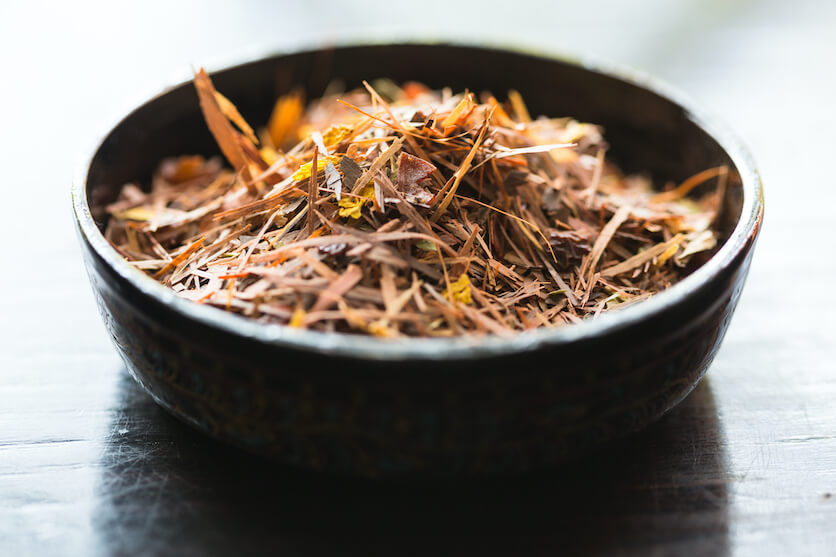
We are unable to recommend or advise whether any tea is safe for you to consume. What we can do is provide you with evidence-based data to help guide you.
A published research article entitled “Can Rooibos (Aspalathus linearis) tea have an effect on conventional antimicrobial therapies?” reports that Rooibos tea consumed in normal amounts has not been documented as toxic. Documentation on adverse effects when consuming large amounts of Rooibos does not indicate “adverse effects in the kidney or liver of humans.” The article continues to mention the interaction of Rooibos and drugs/medications may pose a danger when consumed together.
Potential Side Effects
There is no substantial data stating Rooibos as being toxic. However, a case study (Tea not Tincture: Hepatotoxicity Associated with Rooibos Herbal Tea) reports a patient who consumed Rooibos with buchu (a wild aromatic plant native to South Africa) was hospitalized from liver injury. The patient consumed Rooibos and buchu tea daily. So you are probably safe from such accidents.
Does Rooibos Tea Make You Sleepy?
Claims of Rooibos having a sedating, relaxing effect are not backed up by clinical studies or research done on humans. So, no this tea should not have a sedative effect on you.
Rooibos Tea Benefits
Rooibos is said to have numerous health benefits, which influences its widespread consumption. This tea is typically marketed in two forms — fermented and non-fermented.
What Is Rooibos Tea Good For?
Tea drinkers seeking healthy and beneficial alternatives to caffeinated tea seek out Rooibos as their beverage of choice. This tea has a lot going for it with regard to the pleasant flavor and being a powerhouse of vitamins and minerals.
A report (Traditional Medicines in Africa: An Appraisal of Ten Potent African Medicinal Plants) lists numerous benefits gained by consuming Rooibos. Not only is Rooibos void of caffeine, but it is also low in tannin, which cause the astringent taste in true teas such as black, green, oolong, yellow and white.
The local indigenous people have used this plant for hundreds of years as a heartburn reliever and calmative for colic babies. The fermented form has less flavones compared to its unfermented counterpart. The numerous beneficial properties Rooibos offers include antispasmodic for abdominal cramping/vomiting, prevention of tooth cavities, heart health, antioxidant, antidiabetic, a bronchodilator, antihypertensive, and antimutagenic.
How To Make Rooibos Tea
Rooibos tea is excellent as a hot tea on a chilly day or iced tea on those summer days. Either way, this tea delivers a superb flavor!
Ingredients
- 2 cups of water
- 2 teaspoons of loose-leaf fermented (red) Rooibos tea
Directions
- Bring the water to a boil.
- Remove from the heat.
- Place the loose-leaf tea into a tea infuser.
- Drop the tea infuser into the hot water.
- Cover and allow it to steep for 5 minutes.
- Remove the cover and the tea infuser.
- Pour the tea into a teacup and enjoy!
How Long Should Rooibos Tea Steep For?
An interesting study (Impact of Cold versus Hot Brewing on the Phenolic Profile and Antioxidant Capacity of Rooibos (Aspalathus linearis) Herbal Tea) done on the level of phenols (beneficial compounds) in various brew methods with Rooibos reveals there is a big difference in how you brew and steep your tea.
To better understand how brewing methods and phenol levels differ, below is a comparison of the study results.
Green Rooibos (unfermented) | Red Rooibos (fermented) |
| Boil brew: 714 phenols (5 min) Cold brew: 628 phenols (8 hrs) Regular brew: 597 phenols (5 min) | Boil brew: 471 phenols (5 min) Regular brew: 385 phenols (5 min) Cold brew: 360 phenols (8 hrs) |
It appears that the boil brew method extracts higher numbers of phenols in both fermented and unfermented Rooibos.
Can You Add Milk To Rooibos Tea?
Yes, many tea drinkers who enjoy Rooibos often add milk. Tea additives are a preferential choice, and what one person prefers may not be what another likes. If you like your Rooibos with milk or cream, by all means, add it and enjoy!
This One’s A Must-Try!
If you are eager to discover a tea with a complex flavor palette, put Rooibos on your list. Who knows, this tea made from that scrappy tumbleweed bush may very well become your favorite of all teas.
